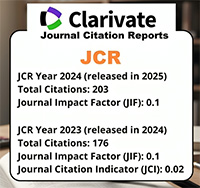Solubilization and partial characterization of ouabain-insensitive Na+-ATPase from basolateral plasma membranes of the intestinal epithelial cells.
Resumen
It has been proposed that intestinal sodium transport is mediated by two different active mechanisms: the ouabain-sensitive Na+/K+-ATPase and ouabain-insensitive Na+-ATPase. In order to determine the optimum conditions to solubilize the membrane-bound Na+-ATPase of enterocyte, basolateral plasma membranes were solubilized using different amounts of octyl glucoside (O.G), Tween 20, octaethylene glycol monododecyl ether (C12E8), and polyoxyethylene 9-lauryl ether (C12E9). Solubilized fractions were assayed for protein concentration and ATPase activity and characterized by electrophoresis analysis. Optimal solubilization of Na+-ATPase was obtained after mixing of 1 mg of basolateral plasma membrane with 1.5 mg of C12E9. Under these conditions, C12E9 solubilized over 60% membrane protein and Na+- and Na+/K+- ATPases activities were recovered over 80% in the soluble fraction without inactivation. In addition, when 25 % glycerol and 2 mM ATP were added, the solubilized Na+-ATPase was stable after 3 days at 4°C. The C12E9-solubilized Na+-ATPase presented the following kinetic characteristics: 1) is only stimulated by the Na+ salt, 2) K0.5 for Na+= 4.62 Ó 0.06 mM, 3) is similarly stimulated by the Na+ salt of different anions, 4) optimal pH= 7.0, 5) inhibited by furosemide (IC50= 0.52 Ó 0.10 nm). These kinetic properties of the solubilized Na+-ATPase were similar to those described to the native membrane-bound enzyme. This work reports for the first time, solubilization and characterization of a fully active and stable Na+-ATPase from basolateral plasma membranes of enterocyte using C12E9.




















